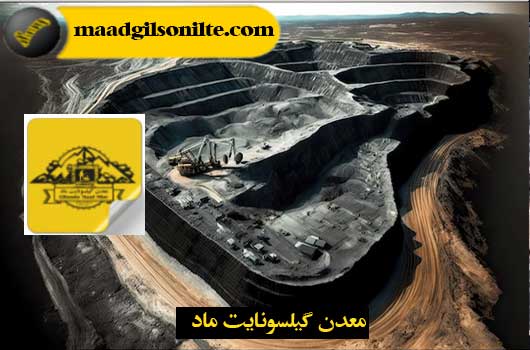
Natural bitumen open pit mine design: Natural bitumen, also known as asphalt or tar sands, is a valuable resource that has received attention in recent years due to its economic and industrial importance. Bitumen extraction from open pit mines requires careful planning and design to ensure efficient and sustainable operations. The purpose of this paper is to provide a comprehensive analysis of the design considerations and key aspects involved in the development of open pit natural bitumen mines. It examines various factors such as geology, mining methods, environmental impacts, and infrastructure needs, and sheds light on the challenges and opportunities associated with this mining technique.
Natural bitumen is formed through geological processes of oil production and migration. It is usually found in sedimentary rocks that are often associated with oil deposits. Tar-rich sands are usually deposited in river deltas, coastal plains, or shallow marine environments.
Before establishing an open pit mine for the design of an open pit natural bitumen mine, one of the tasks of the mine manager is to carry out detailed geological surveys and exploration techniques to determine the amount and quality of bitumen reserves. This includes mapping the geological structure, performing core sampling, analyzing the geometric parameters of the gilsonite mine pit, and the physical and chemical properties of bitumen formations.
Evaluation of bitumen reserves is an important step in mine design. This includes estimating the quantity and quality of the bitumen resource, taking into account factors such as deposit thickness and depth, bitumen content and overburden to bitumen ratio. This assessment helps determine mineable reserves and develop an optimal mining plan.
Choosing a suitable location for an open pit mine is influenced by various factors, including proximity to bitumen deposits, access to transportation networks, availability of water and electricity resources, and environmental considerations. SS roads and infrastructure must be planned to ensure efficient transportation of equipment, personnel and mined materials.
The open shape and dimensions are determined according to the geometry of the deposit, the desired production rate and the extraction method used. The design of the pit takes into account factors such as the overall stability of the slopes, the angle of placement of the materials and the safety of mining operations. The pit should be designed to maximize bitumen recovery while minimizing waste rock.
Slope stability is a critical aspect in open pit mine design. The stability of pit slopes is influenced by factors such as geotechnical characteristics of materials, slope angle, presence of underground water and extraction method. Detailed geotechnical investigations and slope stability analysis are performed to ensure the safety and stability of pit walls.
Efficient transportation of materials within the mine requires well-designed transportation roads and ramps. Hauling roads must be wide enough to accommodate large mining equipment and must have sufficient grade for efficient truck movement. The design of ramps is very important for the safe and comfortable movement of vehicles between different bench levels.
Conventional mining methods involve the use of heavy machinery such as excavators and haul trucks to extract bituminous materials from open pits. The extracted materials are then transported to the processing plant for further purification. Conventional mining is suitable for sediments with relatively shallow depth and thick overburden.
Strip mining is a type of conventional mining in which the overburden is removed in strips to reveal the layers containing bitumen. This method is especially suitable for sediments with relatively high overburden thickness. The tar-rich sands are then subjected to drilling and transported for processing.
Bucket wheel excavators are large machines that have rotating wheels equipped with buckets. These excavators are used to remove overburden and extract tar-rich sands. They are efficient in operations where overburden thickness is significant.
Conveyor systems play an important role in transporting the extracted materials from the open pit to the processing plant. They can be used in conjunction with other extraction methods or as an independent system. Conveyor systems offer advantages such as reduced energy consumption and lower environmental impact compared to freight trucks.
In-situ extraction techniques involve injecting steam or solvents into bitumen deposits to reduce viscosity and facilitate extraction through wells. These techniques are typically used for deeper, less accessible deposits where open pit mining is not possible. In situ mining methods include steam-assisted gravity drainage (SAGD) and cyclic steam stimulation (CSS).
Processing plant design is a critical aspect of bitumen extraction operations. The plant must be designed to handle mined materials, separate bitumen from sand and clay, and produce a salable product of natural gilsonite in asphalt. A processing plant may include crushing and screening units, separation equipment, and bitumen upgrading facilities.
Water problem management has been considered in natural bitumen extraction due to the presence of large amounts of water required for extraction and processing. Efficient water management systems, including water storage facilities, recycling systems and sedimentation ponds, must be designed to minimize water consumption and potential environmental impacts.
Proper waste management is essential to minimize the environmental footprint of natural bitumen extraction. Waste rocks and tailings produced during mining and processing operations should be stored in designated areas such as tailings ponds designed to prevent the release of pollutants into the environment.
A reliable power supply is critical to the operation of natural bitumen mines. Mine design should consider the electrical requirements for equipment, processing plants, and other infrastructure. Energy considerations, such as the use of renewable energy sources and energy efficiency measures, can also contribute to the sustainability of mining operations.
Efficient transportation and logistics infrastructure is essential for successful operations in an open pit gilsonite mine design. The design should take into account the transportation of extracted materials from the mine to the processing plant, as well as the distribution of the final products to the market. This may include building roads, railways, or pipelines, depending on location and market access.
Land reclamation is a vital component of sustainable natural bitumen extraction. Reclamation plans must be established to return mined areas to productive and environmentally sustainable conditions. This may include land surface modification, vegetation restoration, and water resource management.
Water resources must be carefully managed to minimize the impact on local ecosystems and ensure the availability of water for both mining operations and surrounding communities. Water conservation measures, such as recycling and the use of advanced water treatment technologies, should be implemented to minimize water consumption and promote responsible water management.
Mining operations can produce dust and airborne pollutants that can have adverse effects on air quality and human health. Appropriate dust control measures, such as the use of water sprays, dust containment systems, and containment of dusty areas, should be implemented to reduce these effects. In addition, regular air quality monitoring should be conducted to ensure compliance with environmental regulations and standards.
Natural bitumen mining activities can affect biodiversity and local ecosystems. Identifying and protecting sensitive habitats, wildlife corridors, and rare or endangered species in the vicinity of mining operations is essential. Environmental impact assessments should be conducted to assess potential impacts on biodiversity, and appropriate mitigation measures should be implemented to minimize disturbance and promote habitat restoration.
Stakeholder participation and social relations play a vital role in the design and operation of natural bitumen open pit mines. Engagement with local communities, indigenous groups, and other stakeholders in the early stages of planning fosters transparency, trust, and cooperation. This allows local knowledge, concerns and aspirations to be incorporated into mine design, minimizing conflicts and maximizing social and economic benefits for all stakeholders.
Identifying and assessing potential risks and hazards associated with natural bitumen extraction is critical to ensure the safety of workers and the surrounding environment. A comprehensive risk identification and assessment process should be implemented considering factors such as geotechnical stability, slope failure, equipment failure, and potential process-related hazards. Mitigation measures such as engineering controls, safety protocols, and emergency response plans should be developed and implemented to minimize risks.
Effective emergency response planning is essential to mitigate the potential effects of accidents or incidents that may occur during mining operations. Emergency response plans should be developed considering possible scenarios such as fire, spill, slope failure, or equipment failure. These plans should include communication protocols, evacuation procedures, available equipment and resources, and coordination with local emergency services.
Ensuring the health and safety of workers in natural bitumen open pit mines is of great importance. Adequate training, personal protective equipment (PPE) and safety protocols must be provided for all workers. Regular monitoring of workplace conditions, exposure to hazardous substances and ergonomic considerations should be undertaken to minimize occupational health risks and promote a safe work environment.
The economic efficiency of an open-pit natural bitumen mine depends on the estimation of capital and operating costs. Capital costs include costs related to mine construction, infrastructure development, equipment purchase, and the establishment of a bituminous bag processing plant. Operating costs include ongoing costs such as labor, energy, maintenance and rehabilitation activities. Accurate cost estimation and financial analysis are very important in determining the profitability and feasibility of a mining project.
Market demand and natural bitumen price forecast, gilsonite should be together in my design. Understanding market dynamics, including factors such as supply and demand, transportation infrastructure, and competing products, is essential for long-term planning and investment decisions. Price volatility and market uncertainty must be factored into financial projections and risk assessment.
Conducting a complete financial analysis and economic feasibility study is necessary to evaluate the financial viability of an open-pit natural bitumen mine. This analysis includes evaluation of payback period, return on investment (ROI), net present value (NPV) and internal rate of return (IRR). It also considers factors such as taxes, royalties and government incentives or regulations that may affect the economics of the project.
Alberta oil sands in Canada is one of the largest natural bitumen reserves in the world. The design and operation of open pit mines in this area requires the development of extensive infrastructure including mining processes such as trucks and shovels, conveyor systems and bitumen upgrading facilities. Environmental considerations, land reclamation efforts and stakeholder engagement are key areas of focus for Alberta Oil Sands mining operations.
The Orinoco Belt in Venezuela is another important natural bitumen deposit characterized by heavy oil and tar sands. Open pit mining operations in this area include strip mining techniques to extract tar-rich sands. Design considerations include extensive infrastructure development, transportation logistics, and implementation of environmental safeguards to protect the region’s unique biodiversity.
As a result, the design of open pit natural bitumen mines requires a comprehensive understanding of geological considerations, pit design, mining methods, infrastructure requirements, environmental considerations, safety and risk management, and economic feasibility. By carefully addressing these aspects, mining companies can develop efficient and sustainable operations that maximize bitumen recovery while minimizing environmental impact.

